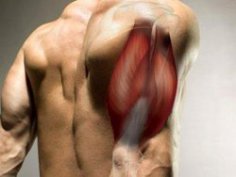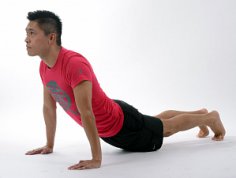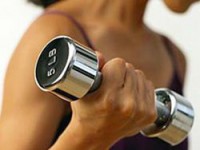
Experts offer several strength training tips that will help you see results in no time.
The American College of Sports Medicine (ACSM) and the American Heart Association have distinct views on exercise. In addition to standard cardiovascular exercise, they encourage regular exercise targeting each muscle group at least twice a week.
Spero Karas, MD, an associate professor of orthopedics and sports medicine at Emory University, states that testosterone, the male hormone responsible for muscle growth, peaks between the ages of 16 and 18. It reaches its peak in the 20s and then declines. Therefore, building muscle during adolescence is not recommended.
“If you start exercising, especially if you haven't done anything for a long time, you won't have to wait long to see results,” says Karas. “In the first 12 weeks, it's perfectly normal for muscles to increase by 10, 20, or 30 percent of their initial size.”
Muscles grow due to the work of new muscle tissue, which makes the muscles stronger and more visible. Even if physical activity doesn't lead to significant muscle gains, Karas says, muscles definitely get bigger.
The reason for this is that muscles absorb water, causing them to expand during exercise. Furthermore, muscles burn fat, making them even more noticeable. After three months of physical activity, muscle growth slows. A stage has been reached where muscles actually begin to grow, and this takes time.
“After maximizing the load, the body reaches a limit where increasing muscle mass becomes quite challenging,” says Karas. If you want to get serious about bodybuilding or simply tone your muscles, here are seven essential tips.
Get in shape with strength training
Unfortunately, good health takes a lot of effort, says Kent Adams, PhD, FACSM, CSCS, director of the Exercise Physiology Laboratory at Monterey Bay State University.
“You shouldn't constantly train recklessly,” he says. “You need to develop a reasonable training schedule tailored to your individual needs and stick to it.”
Tips and workout schedules can be found on the websites of organizations such as ACSM or the National Association of General Fitness. If you're not overweight, a machine is the best option. Plyometrics and rhythmic gymnastics are also possible.
At a minimum, do jumping jacks, squats, and other exercises that develop your hamstrings and stimulate your leg muscles to grow.
Whatever exercise you choose, don't overdo it. Exceeding your endurance level (the amount of weight you use) and performing too many repetitions can cause muscle fatigue. This can slow muscle growth, says Adams. ACSM recommends three sets of 8-12 repetitions for each exercise.
To speed up the process, advises Lisa De Los Santos (a Cooper Institute-certified personal trainer at Southern California Air Force Base), perform exercises that raise your heart rate and metabolism, and also try the “super-freeze” technique. She suggests performing one set of two to three exercises for different muscles. Rest, then perform another set of each exercise. Then move on to the next muscle group.
Muscle load
Physical activity causes microscopic tears in muscles, which are then repaired during rest. However, if muscles don't get adequate rest, serious damage can occur.
ACSM recommends dividing the load into three days as follows:
Day 1: Chest, Triceps and Shoulders;
Day 2: Lower body (hamstrings, hip abductors and rectus abductors, calves);
Day 3: Back, biceps and abdominal muscles.
Feeling too hard? Take another day or two off or work a different muscle group. Keep in mind delayed muscle fatigue, which can occur up to 48 hours after exercise.
Drink plenty of water before and after exercise.
Water is essential for muscle growth. But even without exercise, not everyone drinks enough water. According to nutritional guidelines, a person should drink 8-10 glasses of water per day. Karas suggests drinking an additional 350-450 grams before exercise, and 250-300 grams every 15 minutes of intense exercise.
Do you prefer to drink during exercise? Yes, if your workout lasts more than an hour. In this case, water is needed to replenish electrolytes.
Balanced nutrition
Building muscle requires a balanced intake of carbohydrates, fats, protein, vitamins, and minerals. These nutrients come from our daily diet.
Avoid carbohydrate-rich diets, which increase insulin levels and consequently slow the release of hormones that influence muscle growth, says Karas. The best option is 5-6 balanced meals in small quantities. Muscle building is not compatible with dieting.
“When you're in a calorie deficit, your body can't build muscle,” explains De Los Santos.
Monitor your fat intake. Fat should not exceed 30% of your total daily calorie intake. Also, don't forget about fruits and vegetables rich in vitamins and minerals.
More protein means more muscle.
“The key to building muscle mass is protein, protein, and more protein,” says Karas. “Protein is a building block of muscle, so a large amount of amino acids is needed to build up protein reserves.”
No time to cook? De Los Santos suggests light, high-protein snacks like cottage cheese, cheese sticks, and protein shakes. A variety of powders are available in stores that can be dissolved in water or low-fat milk. The result is an energy-boosting protein shake that can be used as a snack between meals.
In addition to the above, it is recommended to eat turkey, cheese and dry biscuits, as well as frozen or packaged dietary foods rich in protein and low in fat.
Get more sleep
Sleep is directly linked to blood pressure, depression, and other health problems. Therefore, sleep deprivation can inhibit the production of hormones essential for muscle growth, says Karas. Recent studies have shown that sleep deprivation also leads to obesity.
So how do you know how much sleep you need? If you're getting enough sleep, you'll feel rested and not want to nap, according to the Centers for Disease Control and Prevention. The average adult needs 7-8 hours of sleep. Of course, some people need more.
Training with an instructor
If you need more detailed information or motivation, hiring an instructor is the answer. Prices vary depending on location and experience, but typically range from $20 to $85 per hour.
Moreover, an instructor isn't needed all the time. According to De Los Santos, three months is enough to feel confident in the gym, learn the required number of exercises, and achieve the desired results.
“A good instructor teaches when they train, so you don't need to use them constantly,” says De Los Santos. “Ideally, you learn how to maintain your current form or achieve new results.”
When choosing an instructor, make sure they're certified by a reputable organization and also have a first aid certificate. Of course, you can hire someone you prefer, as you'll be spending at least an hour together each week.






